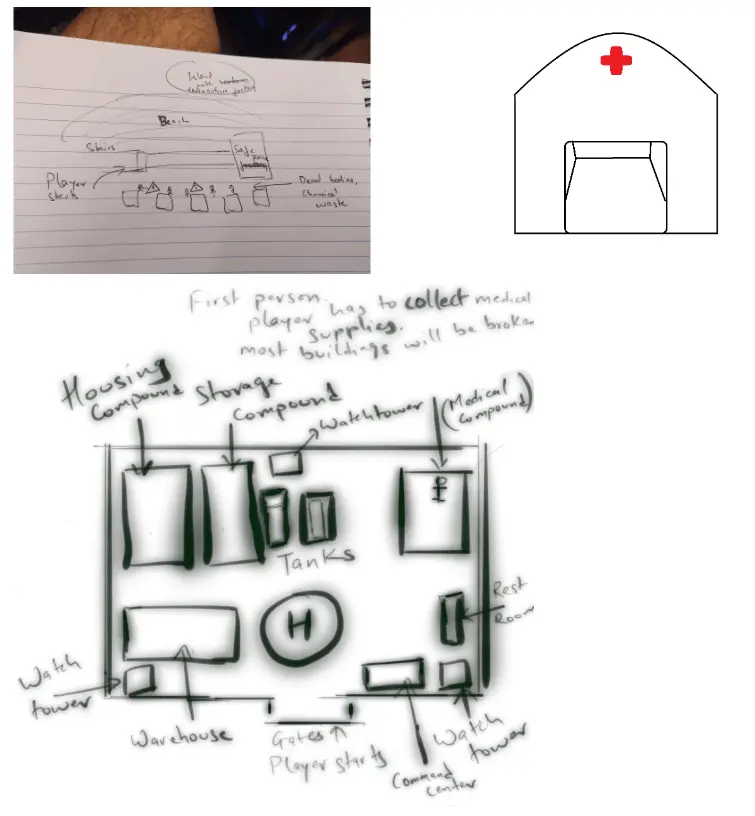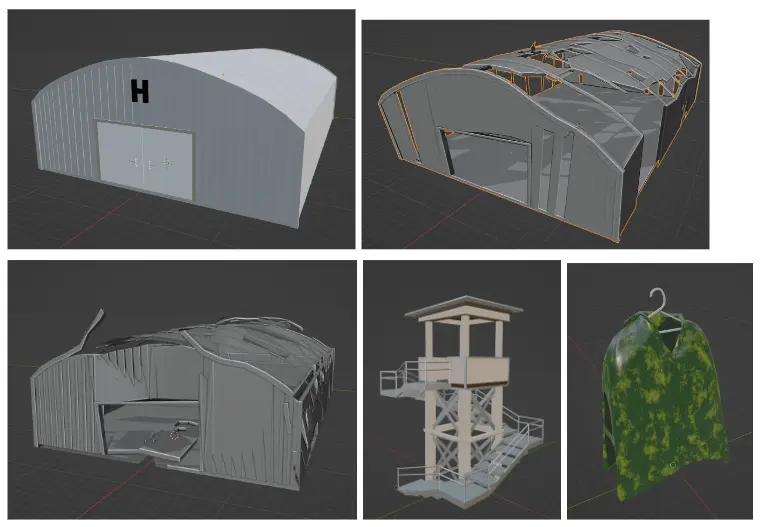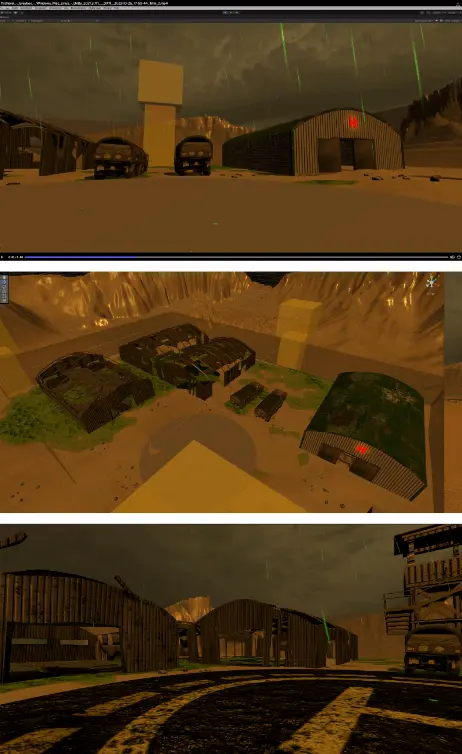
Initial Sketches
Solution: To combat this, games that have a narrative set in a wasteland should give players plenty of stimuli to keep them interested. Environmental storytelling is one tool that designers can use to keep players stimulated as it gives players the opportunity to create a narrative of their own even when information about the main narrative isn’t being imparted to the player.

Initial Sketches
Our level is set in a post-apocalyptic, radioactive wasteland. For the first time, we implemented terrain around the level to mimic a desert, used a skybox and particle effects to simulate acid rain, and implemented textures to give the space an old, rusted, broken-down feel. The concept was designed around a military base in the middle of some desolate, arid wasteland.

Assets
Level Design: We want our players to feel powerful; this was the emotion we chose. It was a progression from bad-ass, to righteous, to the feeling of being able to dominate any and all odds. Our level pits the player against more enemies than they should be able to handle in a regular scenario, but by overcoming the odds, the player is able to unlock “rage mode,” which gives them a power boost so large they can clean house with ease. They earn this power through the effort of actually defeating enemies in regular mode at first, and the emotional effect of feeling powerful is their reward.

Environment

Team Picture
Made with
Website Software